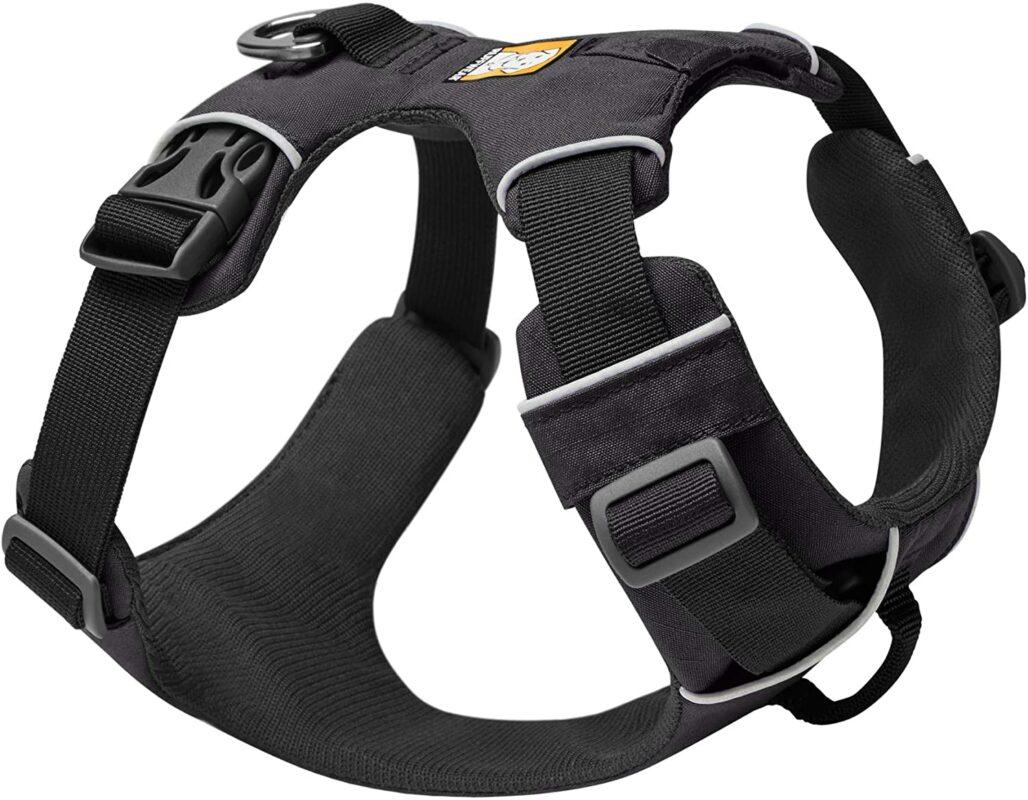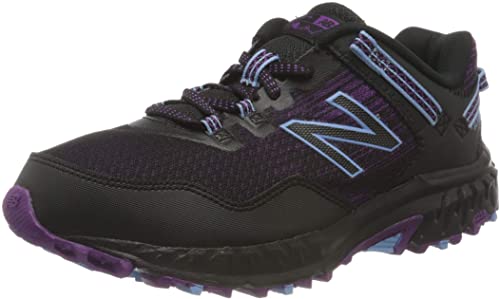When you first start to consider running with your dog, you may feel slightly boggled about what equipment to get. Can you use your usual collar and lead? Will your Converse suffice? This mammoth shopping task can sometimes put people off running altogether. So we’ve teamed up with Paw Runner to make finding dog running equipment a walk (or should we say run) in the park.
This guide contains all the dog running equipment you’re going to need to get started. Ready to dive in?
Harness For Your Dog
Do not run with the lead attached to your dog’s collar. An abrupt stop can be painful for them.
We recommend a harness that is suitable for running. This will protect their spine and windpipe. When it comes to finding a good fitting harness, one size, doesn’t fit all. Just like humans dogs are all different shapes and sizes. So it’s important that you try on different harnesses.
The harness will need to fit comfortably around their neck. Here you’re looking for a nice snug fit, not too tight. Rule of thumb, if you can pop two fingers between the harness and your dogs neck then you know it fits comfortably.
The front of the harness needs to fit on the sternum, so when they’re pulling into it, it’s pulling into hard bone and not soft tissue.
It’s important that they have lots of free movement. Shoulders need to be nice and free. If you imagine yourself running and things are rubbing or if there’s any friction it can be really sore. So these shoulders need to be nice and free so they can stride out when going at speed.
Finally the rear strap needs to sit on the on the last rib to protect them. If it goes further and sits on the softness again it can cause issues and injury.
Overview:
- Fit comfortably on your dogs sterma so it doesn’t effect their breathing
- Sit away from the shoulder blades so it doesn’t restrict movement
- Sit on the last rib, if it sits behind the last rib, it will dig in.
- Fit comfortably underneath your dogs legs. If the straps are rubbing or to tight, this can be sore for your pooch!
There are different types of harnesses. A shorter harness will be ideal for dogs who are not pullers. Long harnesses will be better for dogs who pull out in front.
This front range, no pull harness from Ruffwear is a popular choice for many dog runners. However, as mentioned earlier, you need to choose what works for your dog. After all, what might fit one Spaniel, may not fit another Spaniel.
Running Harness For Humans
Running harnesses come in lots of different sizes and different styles, so this is all about what suits you and your body shape. Ultimately, you’ll want to make sure it’s nice and secure, so when you’re running, it’s not rubbing or jumping up and down.
Your running harness should sit on the hips and your bottom so when the dog pulls they’re pulling you from your hip rather than your back and your spine. Some running harnesses will come with a pocket at the back for treats or your phone which is really handy.
Running belts may suit you over a harness, but sometimes they’re not as secure and are not good at protecting you from injury. They can also put a lot of high-impact pressure on your back and spine.
Bungee Lead
Another essential on your dog running equipment list is a bungee cord. You can get these in 1.5m or 2m length. These leads attach to the harness.
Bungee cords, are nice and strong with an elasticated strip that absorbs any shock. When you’re running on different terrain, if you or your dog stop suddenly it take the impact to reduce injury.
If you have a dog who loves to pull with lots of energy running a 2m lead is probably best. If you got a dog who is just getting it getting used to it, in the early stages, not motivated, maybe a bit of a dawdler then a 1.5 bungee lead it will be perfect.
You may start with a 1.5m, then build up to a 2m. It’s all about working together getting to know your dog connecting little bit closer so it’s building up confidence between you and your dog.
This bungee lead from Dingo does the job, and comes in three colours, black, pink or green!

Running Shoes
It’s not just the dogs who need good equipment for running.
During your training, you’ll want to avoid running together on tarmac and roads. These surfaces can put a lot of stress on your dog’s body and can put them at risk of injury to their legs and paws.
Therefore, you’ll be predominantly running in fields and woodlands and muddy tracks. We recommend you get a good pair of trail running shoes. They don’t have to cost a lot of money but they do need to have a good grip.
We love these running shoes from New Balance. They’re not over-expensive, the tread is great, and the grip will stop you slipping over wet leaves.
Active Wear
To make sure you’re as comfortable as possible, you will need to get yourself some comfy running trousers and active-wear. We recommend that you start running with a couple of layers on top, and as you get warmer when you start going faster and further you can start taking some of those layers off and cooling down.
The options can seem endless when it comes to sourcing a good pair of leggings. If you have a pair that won’t ride up or down on the run, won’t rub and have enough pockets for all your essentials, then you’ve nailed it.
These running leggings from Amazon come highly rated on Runners World, and they even come with a handy pocket.

Share Your Equipment Buying Experiences
Obviously there’s 100’s of products out there! Share your experiences of buying canicross equipment in the comments below. You never know, your experiences and reviews may help another dog owner who is having a nightmare picking stuff out!
Are You Taking Part In Tail Wag To 5K?
Studies have shown, that exercise is easier to stick to when you have a friend to do it with. Well, there is no better friend than your dog! We’ve teamed up with Burns Pet Nutrition to create a FREE exercise programme called Tail Wag To 5K. This programme will gradually help you and your dog to run a 5K with your pooch in just 10-12 weeks.
In conjunction with human running experts RunWales and canicross experts Paw Runner, our tail-wagging programme has been carefully created for beginners; considering the health of both human and hound throughout.












